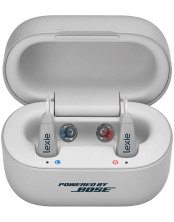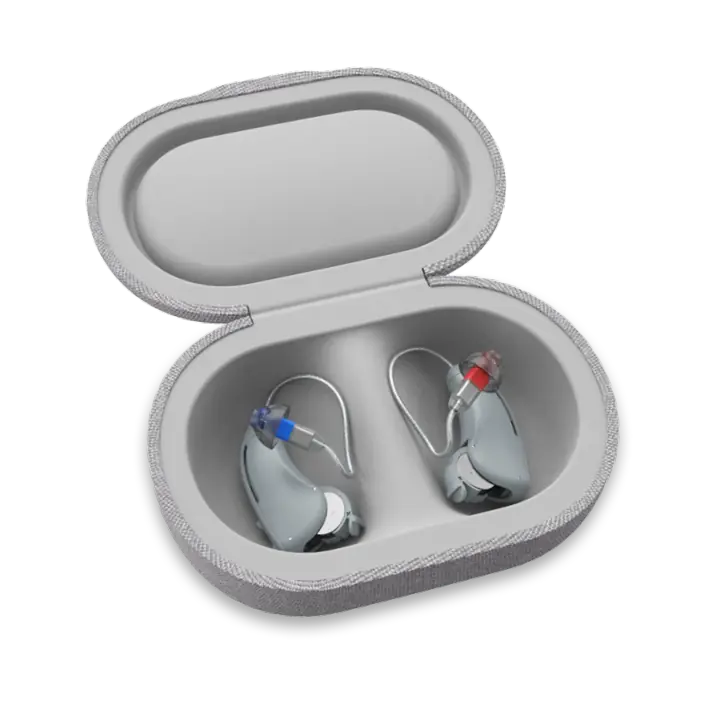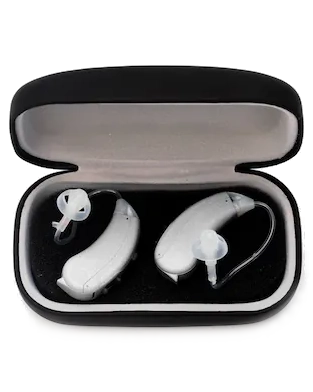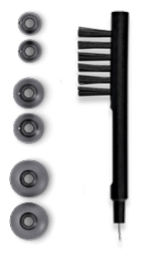Earwax Prevents Damage to the Hearing System
Published: July 15, 2020
Updated: March 23, 2022
The human ear produces earwax as a protective mechanism, it prevents damage to the hearing system. It does this to keep out tiny objects from going inside the ear to prevent damage to the hearing system. Yet sometimes the human ear produces too much earwax. This can cause the ears to become blocked, making it difficult to hear. This increased level of earwax might also cause pain within the ear, dizziness, a full feeling in the ear, itching, possible coughing, or even tinnitus in some instances.
Why do some people have more earwax than others?
Although we have similar body parts, with each body functioning in the same way, there might be a slight difference in key areas. This is the case with earwax production in people. Some individuals are known to produce more earwax than others. The reasons vary and there are several factors involved which include genetics, stress, environmental factors, age, and diet all contributing to the rate at which earwax is produced in an individual.
The effect of a build-up of earwax on your hearing system
When there is a lot of earwax, the ear becomes blocked. When this happens the usual sound levels that the listener is comfortable with – is perceived to be softer than what the hearer is used to. Conversations that could easily be followed might become more difficult now, with the speaker often being asked to repeat what was said by the listener. Luckily this can be avoided through the removal of the earwax.
Earwax problems due to wearing hearing aids
It is quite common that there is an increased level of earwax in hearing aid users. The ear is not meant to have any foreign objects inside it. The reason being is that the ear is a self-cleaning body part. It naturally creates earwax, which it pushes outside of the ear with minimum effort. Despite the best intentions of a hearing aid – to help you hear better – the ear has perceived it as a foreign object in the ear. The hearing aid acts similarly to a blocker, preventing the ear from removing the earwax it has produced. The effect of this is an increased level of earwax in the user’s ears.
Why is it important to keep your hearing aid earwax free?
You might have noticed that your hearing aid has an increased accumulation of wax. While earwax is good for your ear, it is not good for your hearing aid. A greater level of earwax can lead to your hearing aid being damaged or causing feedback and distortion of sounds, it can also create a poor fit of the hearing aid, making it less effective. When your hearing aid is earwax free, the sound heard from the hearing aid will be clear and easier to perceive. There would be no distortion or feedback produced from the hearing aid, which often makes it more difficult for the wearer during listening situations. You would also feel more comfortable wearing your hearing aid when it is not blocked off with earwax. Most hearing aid manufacturers report that one of the most common reasons for hearing aid repairs is due to earwax in the hearing aid. A wax-free hearing aid is also less likely to succumb to parts damage, which in turn reduces the cost required to replace those parts or to get a new hearing aid. A clean hearing aid is a long-lasting usable hearing aid.
Thinking about cleaning your ears yourself? Think twice
While you might have been cleaning your ears yourself your whole life you are causing more harm than good. When considering cleaning your ears it requires a healthcare provider to perform the procedure. While it seems easier to use a cotton bud, in some instances a pen, car key, or any other object this is not recommended. The risks far outweigh the rewards and more harm than good may be caused. If you try to remove the earwax by yourself with these objects, you are more likely to push the wax further inside the ear which will make the problem worse. You could create a new issue by piercing a hole into your eardrum that may require surgery to aid its healing. It is always better to seek assistance from a healthcare provider.
Ways to reduce earwax
A healthcare provider has several options in the removal of earwax. The first being syringing. This procedure requires precision on the healthcare provider’s part. Using a syringe, lukewarm water is directed into the ear canal with it expected to bypass the earwax, bouncing off the eardrum and pushing the wax out. The benefit of this is that it is often a quick process. The negative is that it may not always be possible to know what lies beyond the earwax and there are risks involved. This includes becoming dizzy or fainting afterward. Although unlikely, it is possible that you run the risk of the eardrum being damaged. The healthcare provider is often skilled in administering this technique and will appropriately recommend this option if needed. The second treatment approach involves micro-suctioning the earwax out of the ear. This is like the suctioning tool used by dentists to clear the mouth of fluid when working on the teeth. This method is quick and is not painful.
Why you should have your ears checked more often when you have wax
It is recommended that if you have a history of excessive earwax, you should visit a healthcare provider regularly for the removal of it. That way your ears do not get blocked and negatively impact your hearing. If you are unable to hear because of excessive ear wax, it can be frustrating and very challenging. A preventative approach is preferred to reduce the difficulties associated with a hearing loss, due to excessive earwax.
Hearing difficulties due to a higher level of earwax is one of the most easily treatable hearing conditions. It is quick and often easy for a healthcare provider to perform. Do not remove ear wax yourself at home by poking household items into your ears. They are a delicate and sensitive organ.






